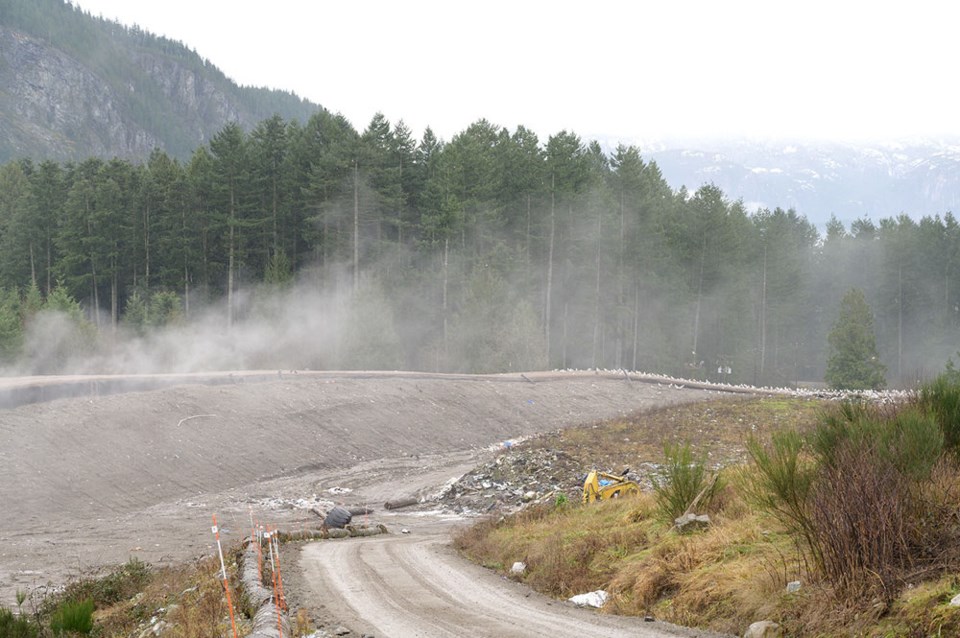As vehicles account for just over half the town’s emissions, cutting transportation-related carbon emissions is going to be a priority for Squamish’s climate action plan.
On Jan. 7, District staff presented council with an update on the community’s plan to cut its carbon emissions, which included statistics on how much and where carbon emissions in town are coming from.
Staff found in 2017 the municipality emitted about 95,400 tonnes of carbon dioxide equivalent that year. This measure expresses all different types of greenhouse gases in terms of the amount of carbon dioxide that would create the same temperature increase.
This averaged to about 4.6 tonnes per person in Squamish.
Residential buildings accounted for 14% of carbon emissions. Commercial and small-to-medium-sized industrial buildings were also responsible for 14%.
Waste tallied up to 20%.
“Our waste section of the pie is a little bit bigger than in other municipalities,” said municipal sustainability co-ordinator Dora Gunn. “This is likely related to the fact that our landfill doesn’t have a gas flare or capture system yet, whereas other communities are sending their waste to different places that have a better system for capturing the gas.”
In terms of the emissions waste is responsible for, Whistler is at 2%; Kamloops is 5%; and Prince George is 13%, she said.
Last year, Squamish council voted in favour of installing a flare for the landfill.
Except for waste, Squamish’s emissions are relatively similar to other communities in B.C., Gunn said.
Coun. Chris Pettingill noted that items such as solid waste may have a higher carbon footprint than what the data suggests because they emit methane.
He said generally, methane is measured over a 100-year timeframe, but its footprint could be higher if measured over shorter five to 10 year periods.
This means the District could be underestimating the amount of carbon dioxide equivalents for waste, he said.
Director of engineering Chris Wyckham agreed and said staff would try to account for that as they continue to gather data.
Gunn also presented findings as to what would happen if the District did not try to tackle its climate goals.
Her figures in this “do nothing” forecast suggested that greenhouse gas emissions would hover between 80,000 to 100,000 tonnes per year from now until 2049.
Better technology and provincial and federal government incentives may decrease emissions in some areas such as passenger vehicles.
Some areas — such as emissions from residential, commercial and industrial buildings — would stay the same, while others, like solid waste emissions, would increase as the town grows.
This forecast didn’t take into account some items that Squamish is already working on, such as the landfill flare and building Step Code incentives.
To that end, Gunn said the District’s key steps in the carbon plan would be to encourage low carbon vehicles; get people out of their cars; create environmentally-friendly new buildings; retrofit old buildings and reduce landfill emissions.
Coun. Eric Andersen suggested using water transport to get vehicles off the road. He said using a barge to transport trucks could be a potential way to reduce emissions.
Mayor Karen Elliott said she wanted staff to communicate with the public the benefits of what a carbon-free community looks like.
Gunn said the next step will be a public survey in the near future and an open house at the library on Feb. 3 from 5:30 p.m. to 7:30 p.m.
Last year, as part of its declaration of a climate emergency, council said that the municipality would begin slashing its carbon emissions in line with the targets outlined by the UN’s Intergovernmental Panel on Climate Change.
This called for a 45% reduction by 2030 and 100% by 2050.
The District then commissioned the Whistler Centre for Sustainability to start working on a plan to meet that goal.
The municipality is expected to hire a staffer to be in charge of climate change and carbon reduction initiatives in the near future.
The search has been ongoing since last year.



